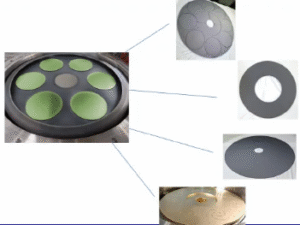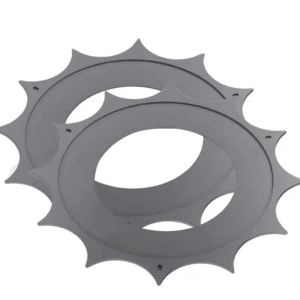
Fuel cell for drone technology is transforming the industry by delivering a cleaner and more efficient energy solution. Compared to traditional batteries, fuel cells offer superior energy density, allowing drones to achieve extended flight times and enhanced payload capabilities. This advancement is especially advantageous for applications like surveillance or delivery services that demand prolonged operational periods. Moreover, hydrogen fuel cells for UAVs generate only water vapor as a byproduct, making them an eco-friendly and sustainable option. As fuel cell technology continues to progress, drones powered by fuel cell for UAV systems are emerging as an ideal choice for industries aiming to boost performance while minimizing environmental impact.
要点
- Fuel cells provide significantly higher energy density than traditional batteries, allowing drones to achieve longer flight times and carry heavier payloads.
- について eco-friendly nature of hydrogen fuel cells, which emit only water vapor, positions them as a sustainable alternative for industries focused on reducing their carbon footprint.
- Drones powered by fuel cells can operate quietly, making them ideal for sensitive applications like wildlife monitoring and urban deliveries.
- Despite their advantages, high manufacturing costs and the need for specialized hydrogen storage solutions present challenges for widespread adoption.
- The limited availability of hydrogen refueling infrastructure can hinder the practicality of fuel cell-powered drones, especially in remote areas.
- Ongoing advancements in fuel cell technology aim to reduce costs and improve efficiency, paving the way for broader commercial viability in the drone industry.
- Fuel cells are particularly suited for specialized applications requiring extended operational periods, such as surveillance and long-distance deliveries.
Advantages of Fuel Cell for Drone
High Energy Density and Efficiency
Fuel cells stand out for their remarkable energy density, which surpasses that of traditional batteries. This characteristic allows drones to operate more efficiently, converting a significant portion of stored energy into usable power. For instance, hydrogen fuel cells can transform 40% to 60% of their energy into electricity, with some systems achieving up to 85% efficiency when utilizing waste heat. This high energy conversion rate ensures that drones powered by fuel cells deliver consistent performance over extended periods. Additionally, the superior energy density of fuel cells enables drones to carry heavier payloads without compromising flight duration, making them ideal for demanding applications.
Extended Flight Times for Specialized Applications
Fuel cell technology revolutionizes drone operations by significantly extending flight times. Unlike battery-powered drones, which often require frequent recharging, drones equipped with fuel cells can remain airborne for hours. This advantage proves invaluable for specialized applications such as aerial surveillance, search and rescue missions, and long-distance deliveries. For example, hydrogen fuel cell drones offer 2-4 times the range of battery-powered counterparts, ensuring uninterrupted operations in critical scenarios. The ability to sustain longer flights enhances efficiency and reduces downtime, making fuel cells a preferred choice for industries requiring reliable and prolonged drone performance.
Environmental Sustainability and Zero Emissions
Fuel cells provide a clean and sustainable energy solution for drones. Unlike gas-powered engines, which emit harmful pollutants, hydrogen fuel cells produce only water vapor as a byproduct. This zero-emission feature aligns with global efforts to reduce carbon footprints and combat climate change. Moreover, hydrogen, the primary fuel source for these cells, can be produced from renewable energy sources, further enhancing their environmental credentials. By adopting fuel cell technology, industries can achieve operational goals while contributing to a greener and more sustainable future. The combination of eco-friendliness and high performance positions fuel cells as a transformative power source for modern drones.
Lightweight Design for Improved Payload Capacity
Fuel cell technology offers a significant advantage in drone design by reducing overall weight. Hydrogen fuel cells, known for their high energy-to-mass ratio, enable drones to carry heavier payloads without compromising flight performance. This lightweight design proves especially beneficial for industries requiring drones to transport goods, medical supplies, or specialized equipment. For instance, delivery services can utilize drones powered by fuel cells to transport larger packages over longer distances, enhancing operational efficiency.
The reduced weight of fuel cell systems also allows drones to achieve better maneuverability and stability during flights. Unlike traditional battery systems, which often add bulk, fuel cells maintain a compact and efficient structure. This design improvement not only increases payload capacity but also ensures that drones can operate effectively in challenging environments. By integrating fuel cell technology, manufacturers can create drones optimized for both endurance and utility, meeting the demands of various commercial and industrial applications.
Low Noise Output for Sensitive Operations
Fuel cells generate minimal noise during operation, making them an ideal choice for sensitive applications. Unlike gas-powered engines, which produce significant sound levels, hydrogen fuel cells operate quietly, ensuring minimal disruption to the surrounding environment. This low noise output is particularly advantageous for tasks such as wildlife monitoring, urban surveillance, and residential deliveries, where noise pollution can be a concern.
For example, drones equipped with fuel cells can conduct aerial surveys in natural habitats without disturbing wildlife. Similarly, in urban areas, these drones can perform tasks like package delivery or infrastructure inspection without causing noise-related complaints. The quiet operation of fuel cell-powered drones enhances their versatility, allowing them to be deployed in scenarios where traditional drones may face limitations due to noise restrictions.
The combination of low noise output and high performance positions fuel cell technology as a transformative solution for modern drone operations. By addressing the challenges of noise pollution, fuel cells enable drones to operate seamlessly in environments that demand discretion and efficiency.
Disadvantages of Fuel Cell for Drone
High Manufacturing and Initial Costs
Fuel cell technology offers numerous benefits, but the high manufacturing and initial costs present a significant challenge. Producing fuel cells requires advanced materials like platinum, which increases production expenses. The intricate design and assembly processes also contribute to the overall cost. For industries considering fuel cell adoption, these expenses can act as a barrier, especially for small-scale operations or startups.
Despite these challenges, the market for fuel cell-powered drones continues to grow. Recent advancements in hydrogen fuel cell technology have demonstrated their potential for longer flight durations and lower environmental impact. As research progresses and production scales up, costs are expected to decrease, making fuel cells more accessible to a broader range of industries.
Hydrogen Storage and Safety Concerns
Hydrogen, the primary fuel for these cells, poses unique storage and safety challenges. Its low density requires specialized storage solutions, such as high-pressure tanks or cryogenic systems, to ensure efficient containment. These systems add complexity to drone design and increase operational costs.
Safety concerns also arise due to hydrogen’s flammability. Mishandling or leaks could lead to hazardous situations, especially in high-risk environments. Manufacturers must implement rigorous safety protocols and advanced monitoring systems to mitigate these risks. For example, drones equipped with hydrogen fuel cells often include sensors to detect leaks and prevent accidents. While these measures enhance safety, they also contribute to the overall cost and complexity of fuel cell integration.
Limited Hydrogen Refueling Infrastructure
The lack of widespread hydrogen refueling infrastructure remains a critical limitation for fuel cell-powered drones. Unlike traditional batteries, which can be recharged using standard electrical outlets, hydrogen fuel cells require specialized refueling stations. These stations are scarce, particularly in remote or rural areas where drones are often deployed for tasks like agricultural monitoring or disaster response.
This limitation affects the practicality of using fuel cells for drone operations. Industries relying on drones for extended missions may face logistical challenges in ensuring a consistent hydrogen supply. However, ongoing developments in the hydrogen fuel cell market aim to address this issue. For instance, portable refueling solutions and regional hydrogen hubs are being explored to support the growing demand for fuel cell technology.
“The adoption of hydrogen fuel cells in drones hinges on overcoming infrastructure challenges,” experts in the field have noted. Expanding refueling networks will play a crucial role in unlocking the full potential of this innovative power source.
Heat Generation and Maintenance Requirements
Fuel cells, while efficient, generate significant heat during operation. This heat production can impact drone performance, especially in high-temperature environments. Managing this heat requires advanced cooling systems, which add complexity to the drone’s design. Without proper thermal management, overheating may reduce efficiency or damage critical components.
Maintenance also plays a crucial role in ensuring the reliability of fuel cell-powered drones. Regular inspections are necessary to monitor the condition of the fuel cell stack and associated systems. For example, the cooling system must remain functional to prevent overheating, and hydrogen storage tanks require periodic checks for leaks or pressure inconsistencies. These maintenance tasks demand skilled personnel and specialized tools, increasing operational costs.
Despite these challenges, advancements in fuel cell technology continue to address heat and maintenance concerns. Recent developments have introduced more efficient cooling mechanisms and durable materials, reducing the frequency of repairs. As the market for fuel cell UAVs grows, manufacturers are prioritizing designs that simplify maintenance while enhancing performance. These innovations aim to make fuel cell-powered drones more practical for widespread use.
Prototype Stage and Commercial Viability Challenges
Fuel cell technology for drones remains in the prototype stage, presenting hurdles for commercial adoption. Many systems are still undergoing testing to validate their performance, safety, and reliability. This developmental phase limits the availability of mature products for industries seeking immediate solutions.
Commercial viability also faces obstacles due to high production costs and limited infrastructure. The intricate manufacturing process, which involves expensive materials like platinum, raises the price of fuel cell systems. Additionally, the scarcity of hydrogen refueling stations restricts the operational range of these drones. Industries operating in remote areas often find it challenging to integrate fuel cell technology into their workflows.
However, the potential benefits of fuel cell-powered drones continue to drive research and investment. Successful demonstrations have showcased their ability to achieve longer flight durations and lower environmental impact compared to traditional power sources. For instance, recent deployments have highlighted their suitability for applications requiring extended operational periods, such as surveillance and delivery services.
“The growth of the fuel cell UAV market reflects a strong demand for cleaner and more efficient energy solutions,” industry experts have noted. As technology advances and production scales up, fuel cell-powered drones are expected to overcome current limitations, paving the way for broader adoption across various sectors.
Comparison with Other Power Sources
Fuel Cells vs. Batteries
Fuel cells and batteries represent two distinct approaches to powering drones, each with unique advantages. Fuel cells excel in energy density, offering significantly longer flight times compared to batteries. For instance, hydrogen fuel cells can sustain drones for hours, while batteries often require recharging after shorter durations. This makes fuel cells ideal for applications such as search and rescue missions or long-range deliveries.
Batteries, however, provide simplicity and convenience. They are widely available and compatible with existing charging infrastructure. Unlike fuel cells, which require specialized hydrogen refueling stations, batteries can be recharged using standard electrical outlets. This accessibility makes batteries a practical choice for hobbyists and small-scale drone operators.
Another key difference lies in environmental impact. Both technologies support sustainability, but fuel cells produce only water vapor during operation, ensuring zero emissions. Batteries, while clean during use, rely on materials like lithium, which involve environmentally taxing mining processes. Over time, the disposal of used batteries also poses ecological challenges.
In terms of cost, batteries currently hold an advantage. Fuel cells involve higher initial expenses due to the use of advanced materials like platinum and the need for specialized storage systems. However, ongoing advancements in fuel cell technology aim to reduce these costs, potentially narrowing the gap in affordability.
Fuel Cells vs. Gas-Powered Engines
Fuel cells and gas-powered engines differ significantly in their environmental and operational characteristics. Fuel cells offer a clean energy solution, emitting only water vapor, while gas-powered engines release harmful pollutants. This makes fuel cells a preferred choice for industries prioritizing sustainability and compliance with environmental regulations.
Operational efficiency also sets these power sources apart. Fuel cells achieve higher energy conversion rates, often exceeding 60%, compared to the lower efficiency of combustion engines. This efficiency translates to longer flight times and reduced fuel consumption, enhancing the overall performance of drones.
Noise output is another critical factor. Gas-powered engines generate significant noise, limiting their use in sensitive environments like wildlife monitoring or urban areas. In contrast, fuel cells operate quietly, enabling drones to perform tasks discreetly without disturbing surroundings.
Despite these advantages, gas-powered engines remain more accessible due to their established infrastructure and lower upfront costs. Fuel cells face challenges such as limited hydrogen refueling stations and higher production expenses. However, as hydrogen infrastructure expands and fuel cell technology matures, the gap between these power sources may diminish.
Practicality for Different Drone Applications
The choice between fuel cells, batteries, and gas-powered engines depends on the specific requirements of drone applications. Fuel cells prove highly practical for tasks demanding extended flight times and heavy payloads. For example, delivery services and surveillance operations benefit from the endurance and efficiency of fuel cell-powered drones.
Batteries suit short-duration flights and applications requiring frequent recharging. Hobbyist drones, photography, and recreational uses often rely on battery power due to its simplicity and cost-effectiveness. The widespread availability of charging infrastructure further supports battery-powered drones in these scenarios.
Gas-powered engines cater to applications requiring high power output and rapid refueling. Agricultural drones, for instance, often utilize gas engines to cover large areas efficiently. However, their environmental impact and noise levels limit their suitability for eco-sensitive or urban operations.
Each power source offers distinct advantages, making them suitable for different use cases. Fuel cells, with their high energy density and zero emissions, represent a promising solution for industries seeking sustainable and high-performance drone technology.
Fuel cells present a transformative power source for drones, offering high energy density, extended flight durations, and eco-friendly operation. These features make them an excellent choice for specialized applications like surveillance and delivery. Addressing challenges such as hydrogen storage and infrastructure limitations will be crucial for widespread adoption. Ningbo VET Energy Technology Co. continues to innovate in this field, developing advanced solutions to optimize fuel cell performance under various conditions. By leading advancements in fuel cell for drone technology, the company is shaping a cleaner, more efficient future for the drone industry.
よくあるご質問
What makes fuel cells a better choice for drones compared to batteries?
Fuel cells surpass batteries in energy density, enabling drones to achieve longer flight times and carry heavier payloads. For instance, hydrogen fuel cells can sustain drones for hours, while batteries often require recharging after shorter durations. Additionally, fuel cells produce only water vapor as a byproduct, making them an eco-friendly alternative to batteries, which rely on materials like lithium that involve environmentally taxing mining processes.
How do fuel cells compare to gas-powered engines for drone applications?
Fuel cells offer a cleaner energy solution by emitting only water vapor, unlike gas-powered engines that release harmful pollutants. They also operate more efficiently, converting up to 60% of their energy into usable power, compared to the lower efficiency of combustion engines. Furthermore, fuel cells generate minimal noise, making them suitable for sensitive operations like wildlife monitoring or urban surveillance.
Are fuel cells practical for all types of drone applications?
Fuel cells excel in applications requiring extended flight times and heavy payloads, such as delivery services and aerial surveillance. However, for short-duration flights or tasks requiring frequent recharging, batteries may be more practical due to their simplicity and widespread charging infrastructure. Gas-powered engines remain a viable option for high-power applications like agricultural monitoring but are less suitable for eco-sensitive environments.
What are the environmental benefits of using fuel cells in drones?
Fuel cells provide significant environmental advantages by producing zero emissions during operation. Hydrogen, the primary fuel source, can be generated from renewable energy, further enhancing sustainability. This makes fuel cells an ideal choice for industries aiming to reduce their carbon footprint and comply with environmental regulations.
How does hydrogen storage impact the use of fuel cells in drones?
Hydrogen storage requires specialized solutions, such as high-pressure tanks or cryogenic systems, to ensure safety and efficiency. These systems add complexity to drone design but are essential for maintaining operational reliability. Manufacturers often integrate advanced monitoring systems to detect leaks and prevent accidents, ensuring safe usage in various environments.
What challenges exist with hydrogen refueling infrastructure for drones?
The limited availability of hydrogen refueling stations poses a challenge for fuel cell-powered drones. Unlike batteries, which can be recharged using standard outlets, hydrogen fuel cells require specialized refueling facilities. This limitation affects operations in remote areas, though portable refueling solutions and regional hydrogen hubs are being developed to address this issue.
How does the noise output of fuel cells benefit drone operations?
Fuel cells operate quietly, making them ideal for tasks where noise reduction is crucial. For example, drones powered by fuel cells can conduct wildlife monitoring without disturbing animals or perform urban deliveries without causing noise complaints. This low noise output enhances their versatility across various applications.
Are fuel cells cost-effective for drone operations?
Fuel cells involve higher initial costs due to the use of advanced materials like platinum and the need for specialized storage systems. However, their longer flight durations and lower environmental impact can offset these expenses over time. As production scales up and technology advances, the cost of fuel cells is expected to decrease, making them more accessible.
Can fuel cells be combined with other power sources in drones?
Yes, hybrid systems that combine fuel cells with batteries or gas-powered engines can enhance drone performance. For instance, a hybrid setup can utilize fuel cells for extended flight endurance while relying on batteries for quick bursts of power. This approach maximizes efficiency and adaptability for diverse applications.
What advancements are being made to improve fuel cell technology for drones?
Ongoing research focuses on enhancing fuel cell efficiency, reducing costs, and expanding hydrogen infrastructure. Innovations include more durable materials, advanced cooling mechanisms, and portable refueling solutions. These developments aim to address current limitations and make fuel cell-powered drones a practical choice for widespread use.






